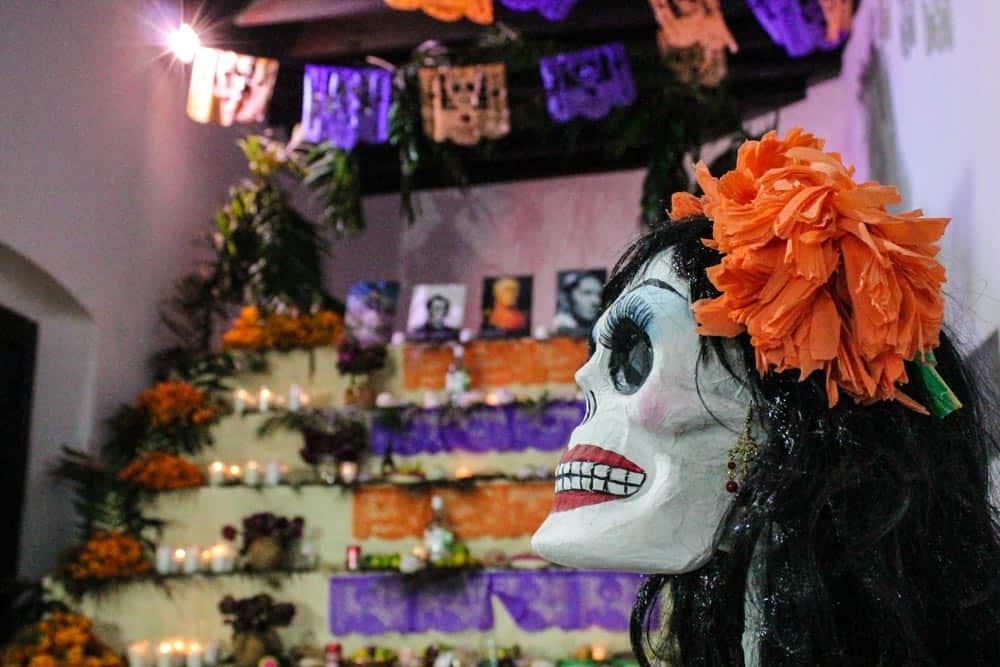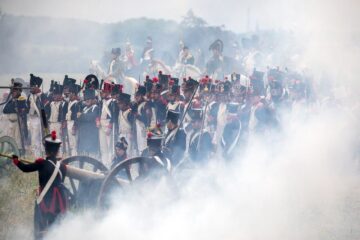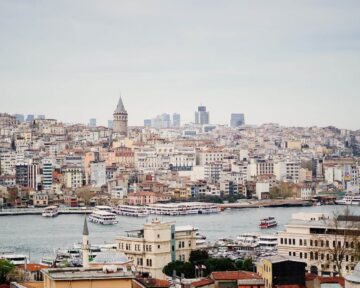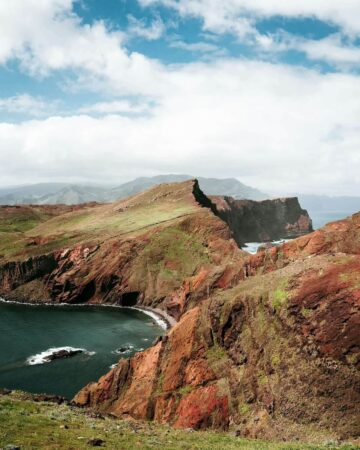As a Mexican, death has always been something I know it’s celebrated with ofrendas (altars), music, and even parties. Día de Muertos is celebrated mostly in the center and south of Mexico but if you ask any Mexican, they’ll know how to celebrate it or know anybody that does.
By now, you probably already know a little more about Día de Muertos because of Coco, Pixar’s movie. If you’re wondering if the things portrayed in the movie are real well… yes, most of is real, especially if you go to smaller towns. The ofrendas, the food, remembering your loved ones, the importance of the family. All of this is Día de Muertos.
But, also, if you think Día de Muertos is celebrated the same way in all of Mexico, it’s not. Just as in any country, traditions may vary from town to town. Even from family to family! What is done in some towns is not even acknowledged in others. In some places you’ll see a lot going on, in others, it’s barely celebrated.
Día de Muertos is one of the biggest holidays in Mexico and some places take it very seriously with big celebrations and traditions that go back centuries. In this post, I’ll tell you about the places in Mexico where you have to go to see the real celebration of Día de Muertos.
What is Day of the Dead?
First of all, it’s not Day of the Dead: Bloodline by George A. Romero and it has nothing to do with that. Día de Muertos has a prehispanic origin (although there’s some debate about that). Prehispanic cultures like the mexicas, nahuas, and mayas had many rituals revolving around dead. When the Spanish invaded America, traditions from catholic and prehispanic origin mixed and that’s when the celebration for the Dead started to be held in All Saint’s Day.
Fact: Día de Muertos is the Spanish for Day of the Dead. After some time, Day of the Dead was retranslated to Spanish resulting in Día de los Muertos (which is not how we say it in Mexico)
The Day of the Dead in Mexico has been declared as an Intangible Cultural Heritage of Humanity by UNESCO because it’s one of the most important and antique traditions among indigenous people in Mexico.
As with every tradition, Day of the Dead has changed over the years. Nowadays, it is common to see mixed decorations from Halloween and Día de Muertos, especially in bigger cities. This is due to the influence of the US in Mexican traditions. So, for example, a lot of young people celebrate Halloween by dressing up and partying. Even some kids ask for calaverita in the streets (they ask for money, something similar to trick-and-treat).
Main elements
What you’ll see mostly everywhere (with variations from place to place) is:
Catrinas
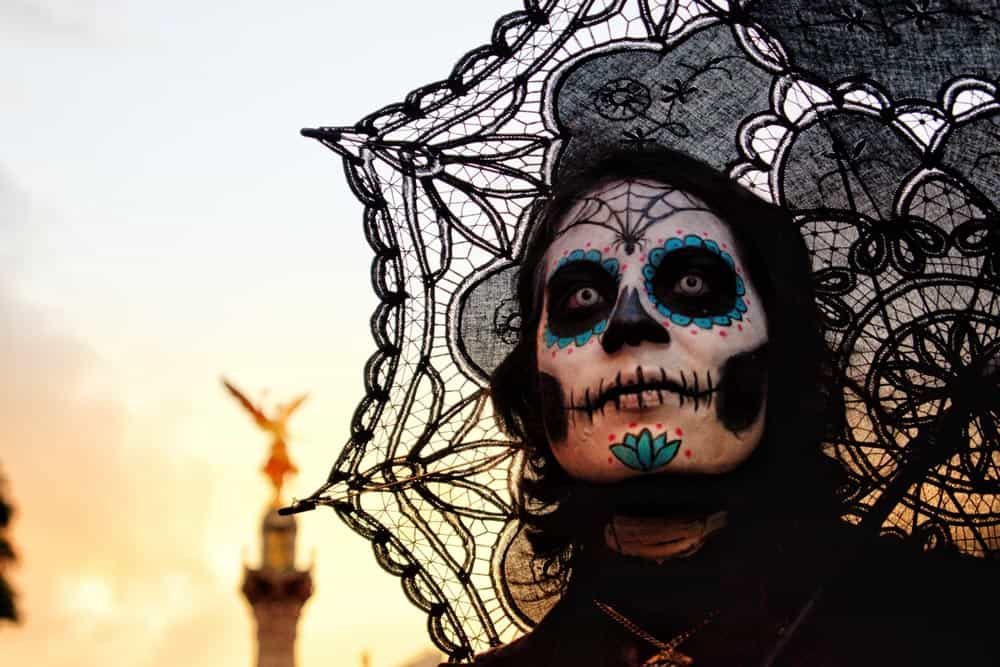
The original Catrina was invented by a Mexican painter. The image of a woman’s skeleton wearing only a European hat was intended to be a mock to Mexicans that wanted to appear rich or European during the 19th century. It became so popular that now it’s part of not only Día de Muertos but of the Mexican identity.
Skulls (calaveras)
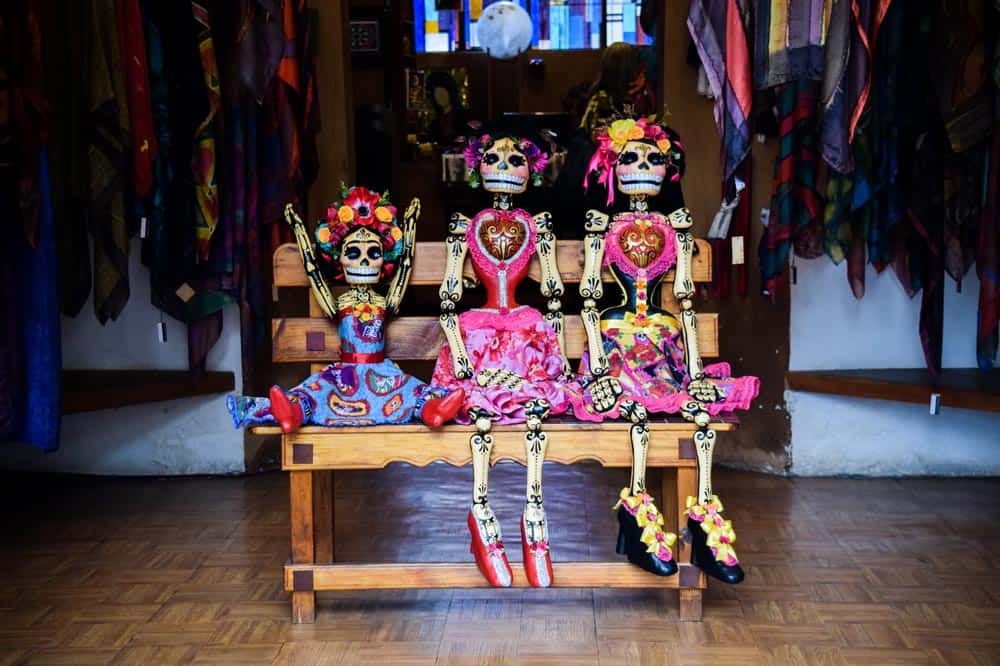
These are everywhere and they represent the dead. It’s super common to find handcrafts with skulls doing normal things such as dancing, playing music, or eating. You always see them having fun in the afterlife!
Ofrendas
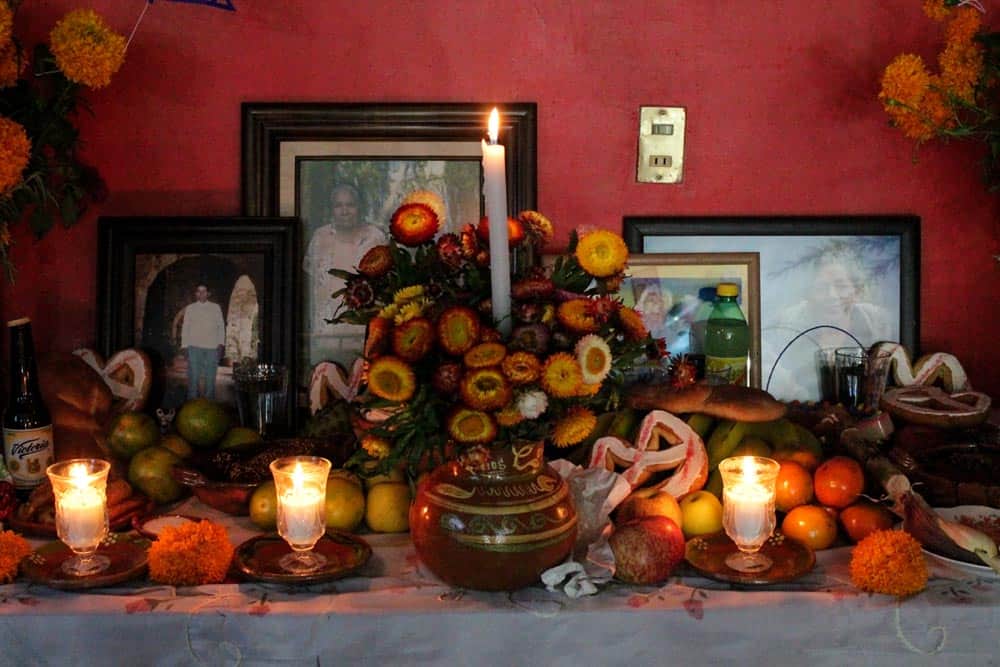
These are altars for the dead. You can make ofrendas for anyone, for a lost father or grandmother, for a dead pet, or even for a famous person you admired. The altars vary in size, style, and elements but what you’ll always have there are photos of the dead and their favorite objects and foods (which my aunt said don’t have any flavor after the dead came to eat it). One of my favorite conversations to have with friends and family is to talk about what they’d like to find in their ofrendas after their death… try it with your friends!
Pan de muerto
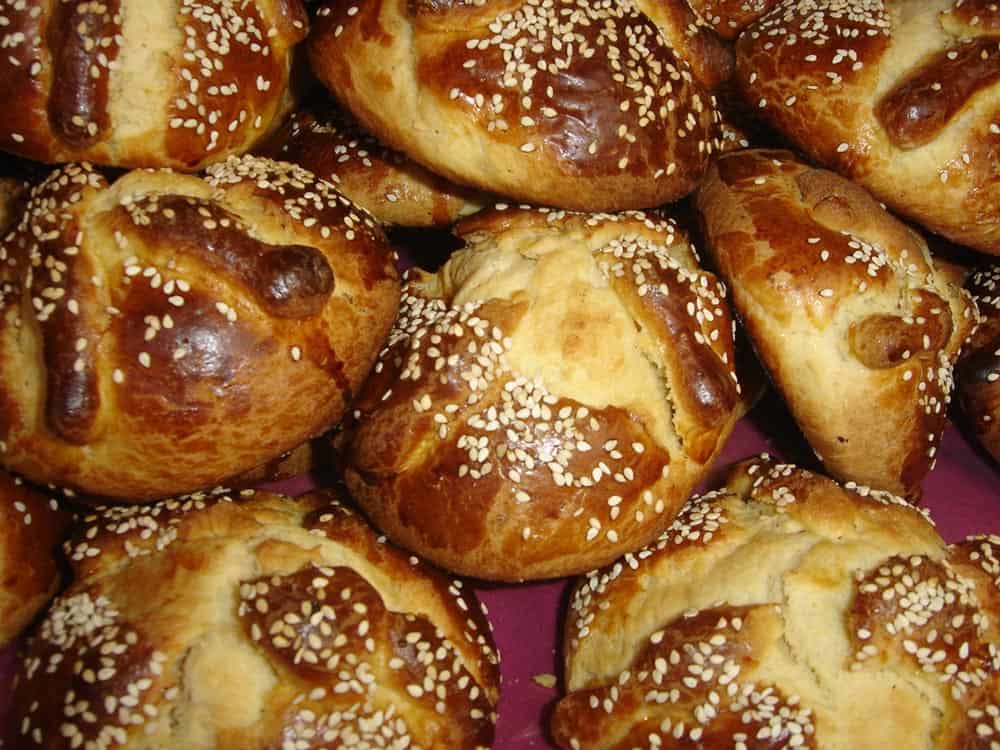
Translated literally as bread of the dead. This is a bread that’s only made during this season. It has orange blossom flavor and they decorate it with dough in the form of bones on top of it. This is my favorite seasonal bread in the world!
Sugar skulls
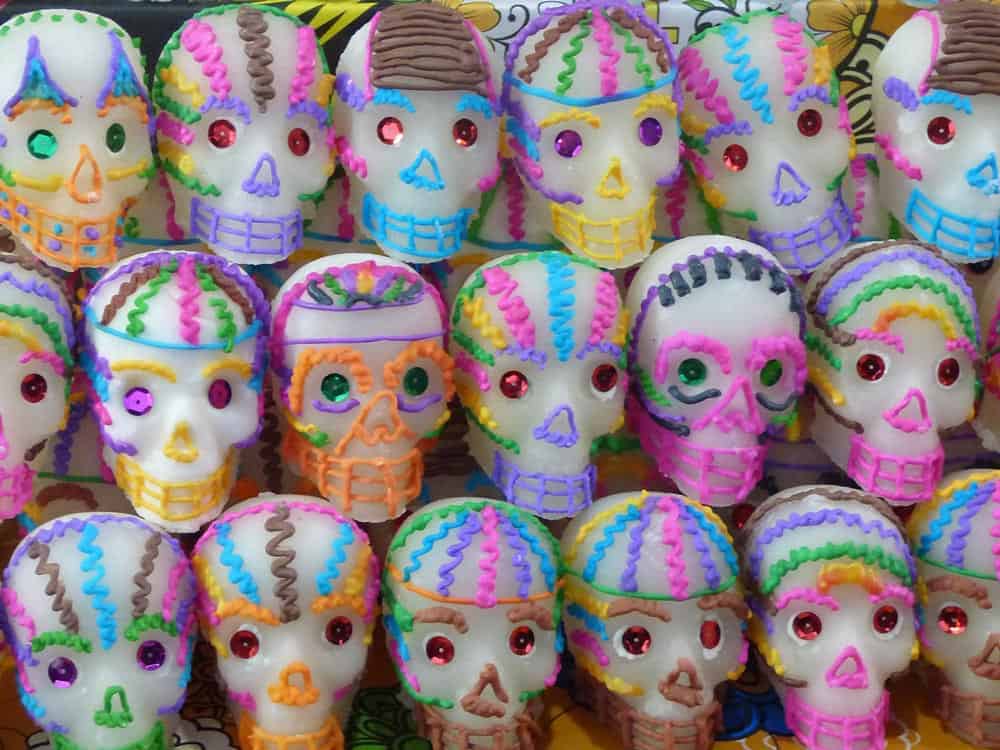
These are famous all around the world and if you think about Day of the Dead, you maybe already have these in mind. Ofrendas will have sugar skulls with the names of the deceased. But, for example, in my family we put our names (of the ones that are still alive) in the skulls, sometimes we even decorate them. Then, we put them in the ofrendas
Cempasúchil (or cempoalxóchitl in náhuatl)
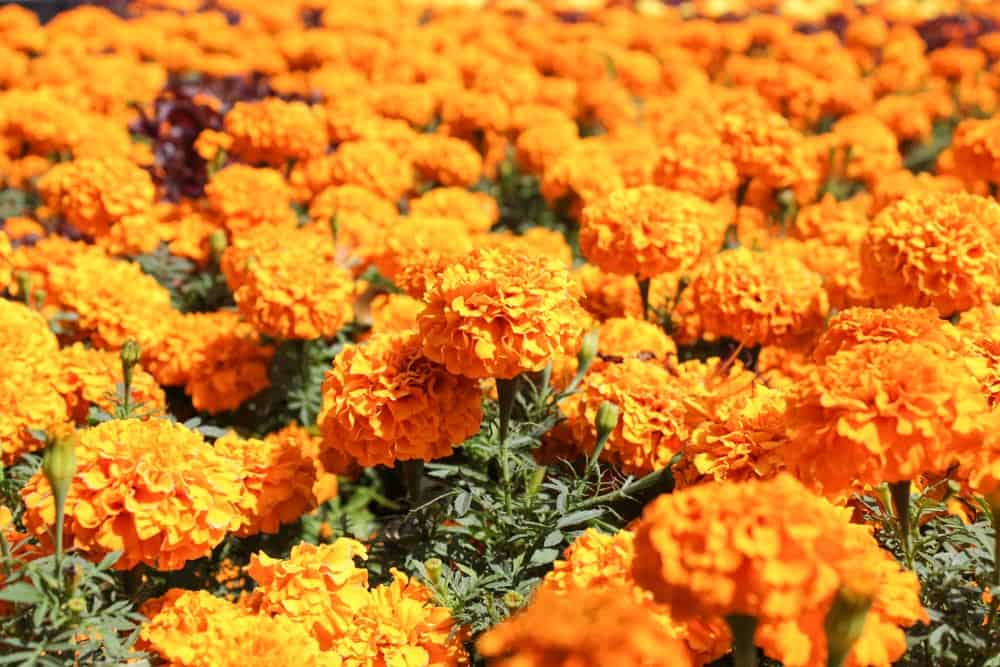
This is the flower you see everywhere. It’s orange and the smell of it always reminds me of these days. Complete flowers can adorn the ofrendas but also, the petals are used to make paths on the floor so the dead knows where to find the ofrendas. If you go to any cemetery, you’ll see a lot of these flowers adorning the tombs, too
Before you go
Yes, Day of the Dead in Mexico is a celebration but it’s also about paying respects to the dead so before you go to any place or be part of any celebration consider this:
- Be respectful. People are normally nice and won’t have problems explaining to you the meaning of elements or traditions. A little Spanish can come a long way!
- Try not to interfere with the celebrations to take photos or videos
- Don’t take things from the ofrendas unless they actually give them to you
- Understand the tradition before going
- Have an open mind
- Keep in mind that it’s almost winter during Day of the Dead in Mexico and some places can be really cold. Be prepared for a cold weather and even for some rain
- Celebrations, most of the times, take place during the night and the wee hours of the morning, be prepared for it
So, when is Day of the Dead 2019?
Day of the Dead is celebrated during the last days of October and the first days of November. Officially, in the Mexican calendar, Día de Muertos is on November 1st. This day, almost everything is closed and you don’t go to school or to work.
Even though these are the “official” dates, traditions may vary from place to place. For example, in some places October 28th is used to celebrate those who died on accidents, November 1st to children, and November 2nd to adults.
In my family, for example, ofrendas are there one week before Día de Muertos and stay there a week later. A lot of places follow this, too.
Where is Day of the Dead celebrated?
This is where things get interesting. I’m sure anywhere in Mexico you go, you’ll find some kind of celebration. Some cities have parades and others have ofrendas contests. For traditional celebrations, you have to go to smaller towns, of course. How Day of the Dead is celebrated, depends on the place you go.
Here’s a list of the best places to enjoy Día de Muertos in Mexico.
Huaquechula, Puebla
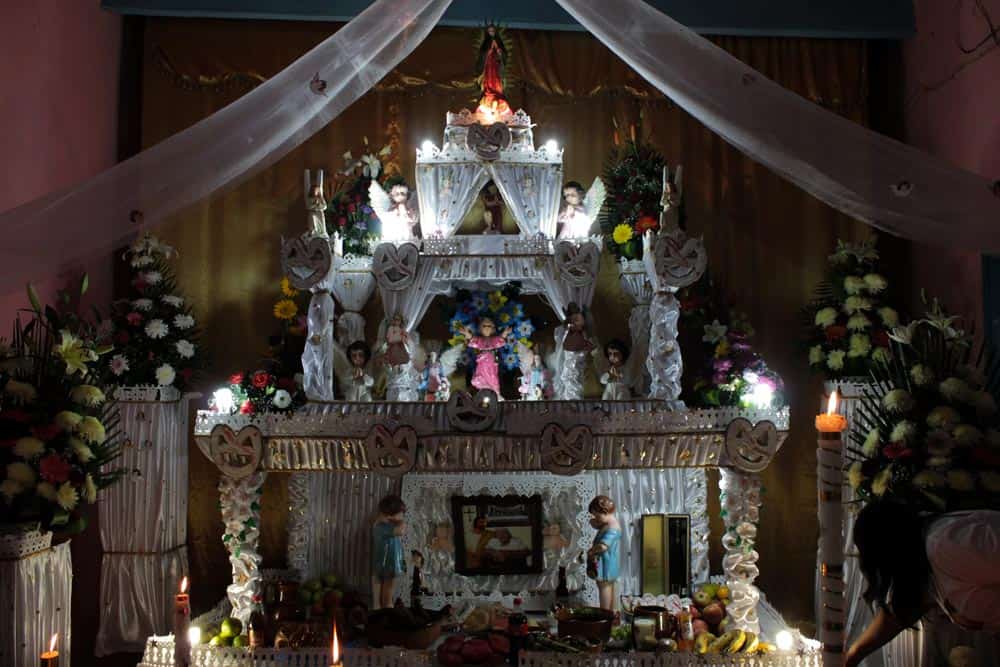
This is a small town some hours away from Mexico City. Día de Muertos is the biggest celebration they have during the year. Many houses of the small town open their doors for people to come and visit their ofrendas. These ofrendas are very different from the ones you’ll see in other places. They look more Spanish than indigenous. Also, in the streets, you’ll find bands playing music and people dancing.
Get a map in the Zócalo to know where all the ofrendas are, otherwise, you’ll get lost.
In most ofrendas there are special containers to collect money, it’s your choice if you want to give some or not. Also, in some others, there’s a member of the family that can explain the meaning behind some elements in the ofrenda.
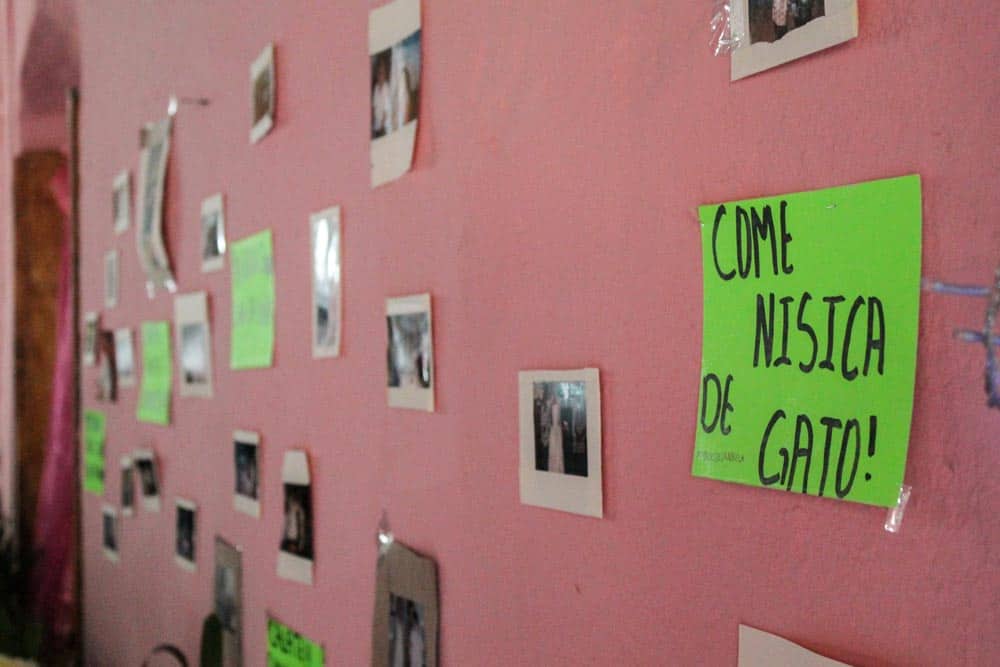
Remember you’re getting inside the home of a family. Although people are happy to welcome everybody, be respectful of their belongings and rules.
The best part of going to Huaquechula is that after the visit of each ofrenda you’re expected to eat and drink what they offer you in the houses (for free). Some families offer hot chocolate and bread, others tamales and even mole. If you’re into Mexican food, you’ll have the real deal in these houses!
After walking the streets and seeing the ofrendas, you can take part in the rest of the celebrations. You’ll find a lot going on in the Zócalo: street food, dances, games, and even rides! This part was very surprising for me since I was expecting a more solemn atmosphere in the town. I was forgetting that this is Mexico, we’re making parties for the dead!
Oaxaca, Oaxaca
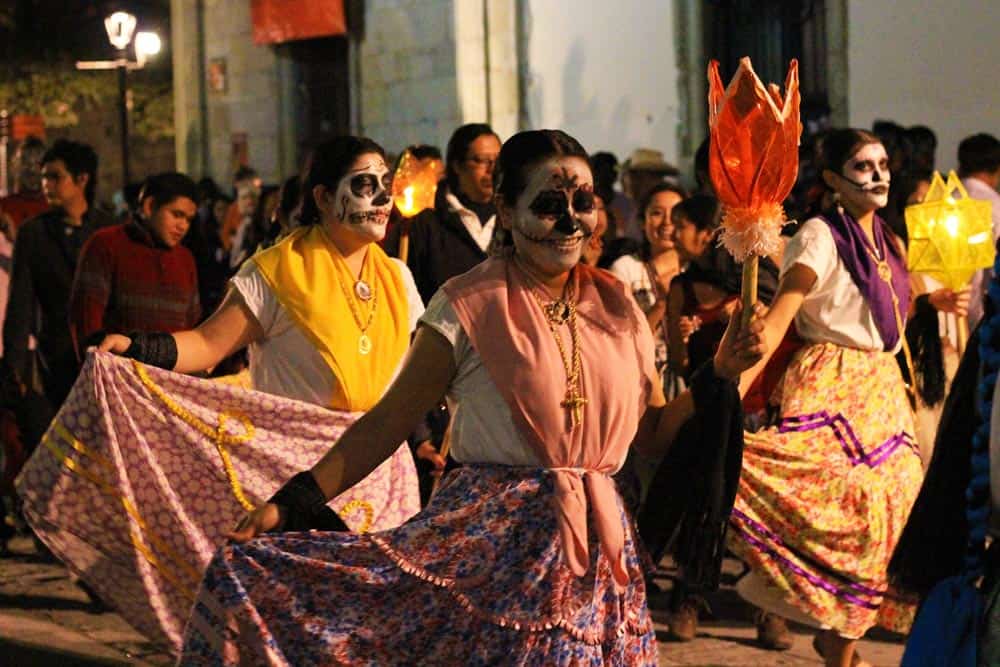
You can already read our travel guide of Oaxaca. This is one of the gastronomical capitals of Mexico and it’s especially beautiful during Day of the Dead.
From different points in the city, a lot of comparsas (carnival troupes) walk the streets in the direction of the cemetery. People know these as the muerteadas. Everything starts at 6 pm… at 11 pm the last comparsa starts and from then on, everything happens in cemeteries.
The cemeteries are open all night long. My recommendation would be to go to the Panteón General, since it’s very close to the center of the city and it’s the biggest one in Oaxaca city. What also makes special this place is that there are arches on one part of the cemetery and they’re filled with candles during the night.
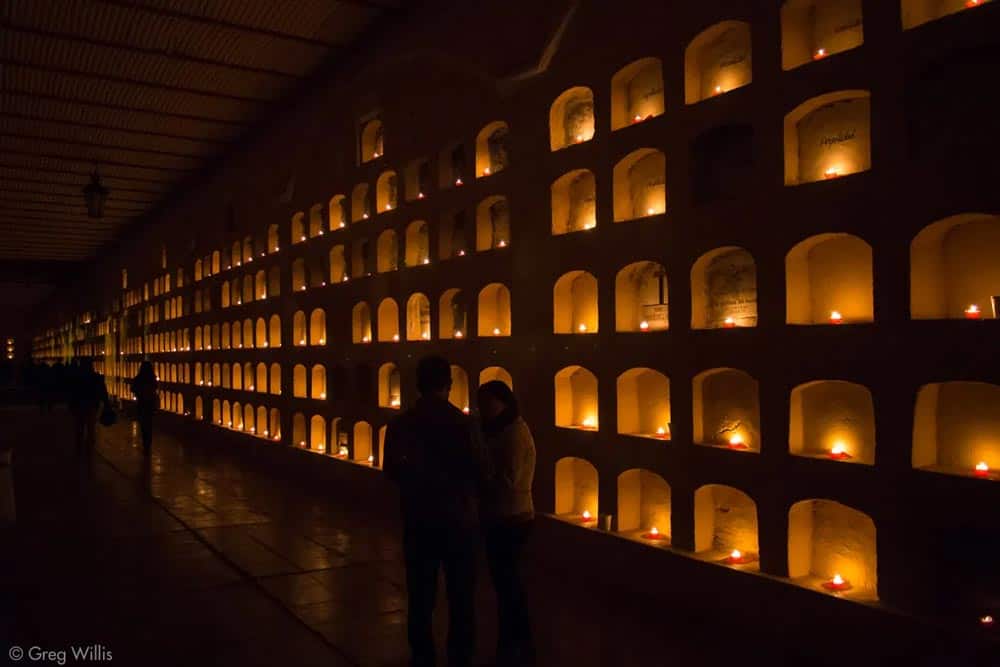
Inside of the cemetery, you’ll see all the tombs decorated with cempasúchil, and people eating food. There are bands playing live music, candles, and a feeling of celebration. When you walk by the tombs, people offer you food and drinks (especially chocolate, since it’s a specialty of the region).
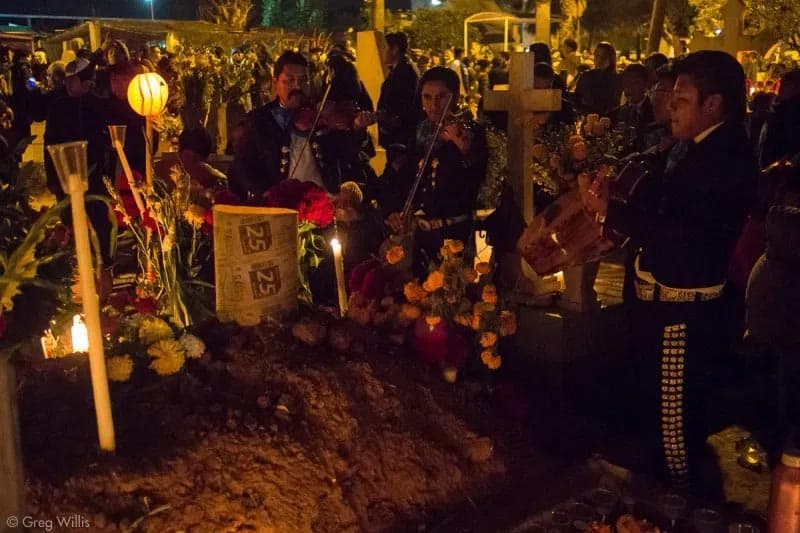
You can stay there all night long. You’ll feel how there’s a party atmosphere that at the same time, is very traditional.
San Juan Chamula, Chiapas
San Juan Chamula is a Tzotzil community in Chiapas. On the early morning of November 1st, people put ofrendas in their houses. They also prepare food with days of anticipation for the special date. After that, they go to the Church where they try to call their dead loved ones with the bells of it. People take turns to ring the bells so they don’t stop ringing. Only if everybody is completely tired, they stop.
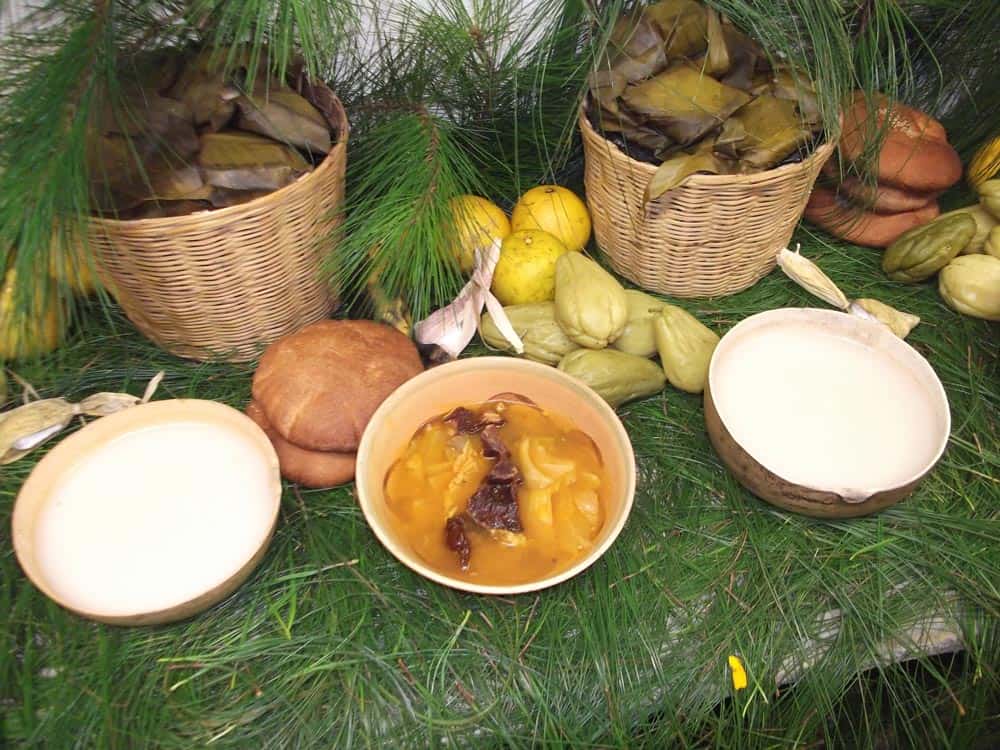
After that, people go to cemeteries where they decorate the tombs of the dead. People pray and remember their loved ones. Then, they go back home. In their homes, they celebrate with eating with the family. It’s as if they were eating with their dead loved ones (remember the dead come back to be with their families on November 1st).
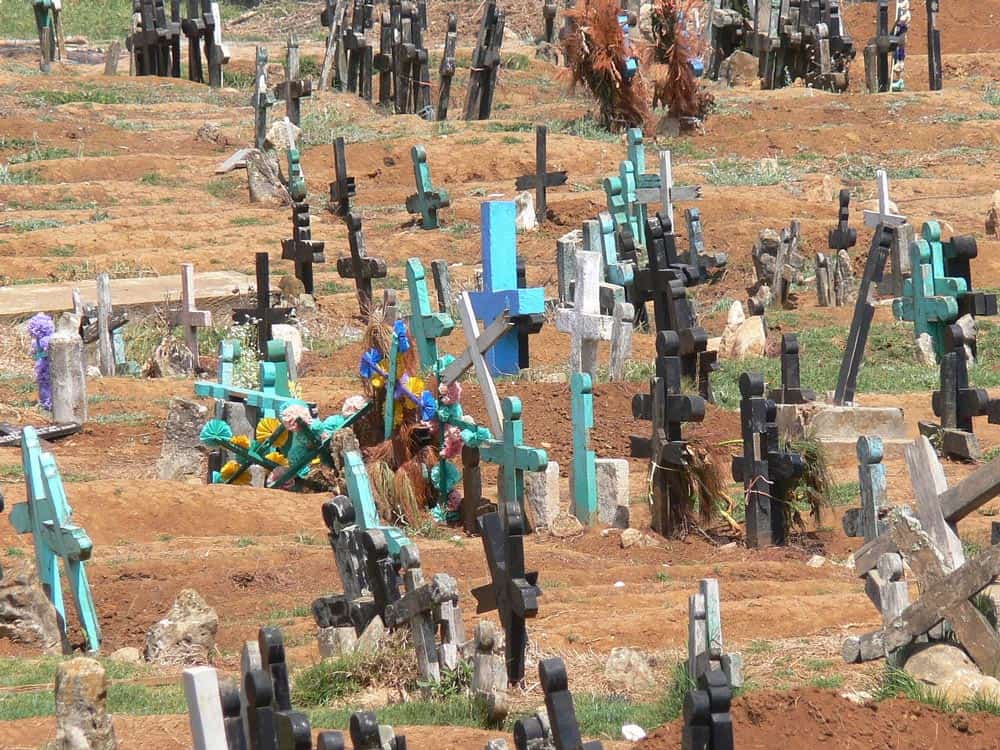
During the night, candles are lit so the souls of the dead know their way back. On November 2nd, people go again to the cemeteries and walk three times around it to honor and say goodbye to the souls. In the end, they light candles over the tombs of their family members.
The celebration ends when families get back to their homes to pick up the ofrendas and have dinner together. People invest a lot of time, money, and effort in this celebration since it’s believed that if they don’t do it, any member of the family can have an illness.
If you’re visiting, you have to be extremely respectful. It is considered a sign of respect that you participate in the celebration (like walking around the cemetery, for example). Also, sometimes you can’t take photos inside the church. Ask before doing it (simply say: ¿puedo tomar una foto?).
Michoacán
Michoacán is a state in Mexico, it has many cities and towns. The reason I’m not mentioning a specific city is that all over Michoacán there’s a lot going on. Michoacán is the number one destination for Day of the Dead in Mexico. If you’re planning to go, you have to start making reservations and everything in July or August.
You can base yourself in Morelia, which is the capital city of Michoacán. From there, you can take tours to different towns or rent a car and drive to them. Consider that these places are very popular and there’s a lot of traffic. Try to be out of Morelia as early as possible if you’re planning to visit several towns.
The towns you should visit are:
Santa Fe de la Laguna
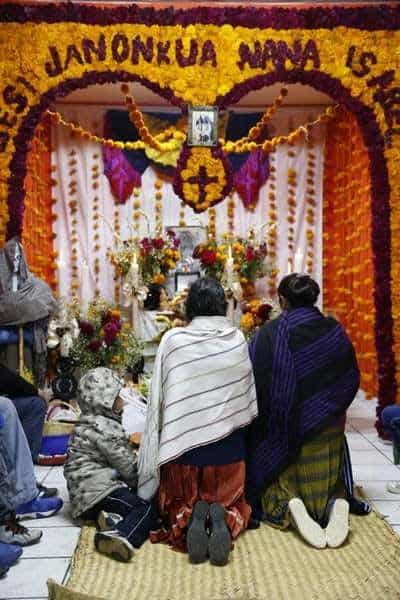
If this place looks familiar it’s because it was the main inspiration for Coco (even the church is the same). Here, the tradition is to install altars inside the homes of people. The ofrendas here look very traditional, mixing prehispanic and Spanish elements. They’re super colorful and full of flowers. To get into the houses and see the ofrendas, you have to bring something for the family like bread, fruits, or candles.
Tzintzuntzan, Tzurumútaro, and Pátzcuaro
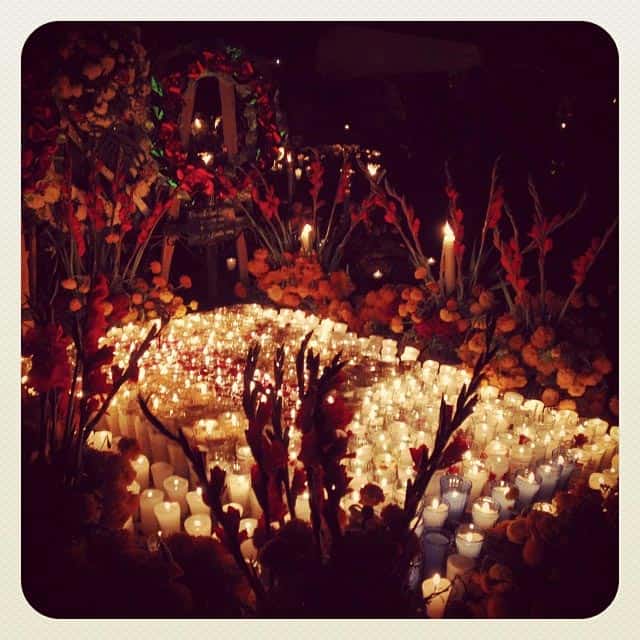
The cemeteries in these places are full of cempasúchil, pan de muerto, candles and ofrendas. Mariachi bands also play in the cemeteries and there are small fairs outside of them. You can go to all of the towns since they’re close to each other (like 1 hour away from Morelia, and 15 minutes away from each other). These days in these towns are full of tradition and colors.
Something really cool is that the lights of the towns are off and the only lights to guide you (and the dead) comes from the candles.
There’s a lot of people in these places so you have to take your time.
Janitzio
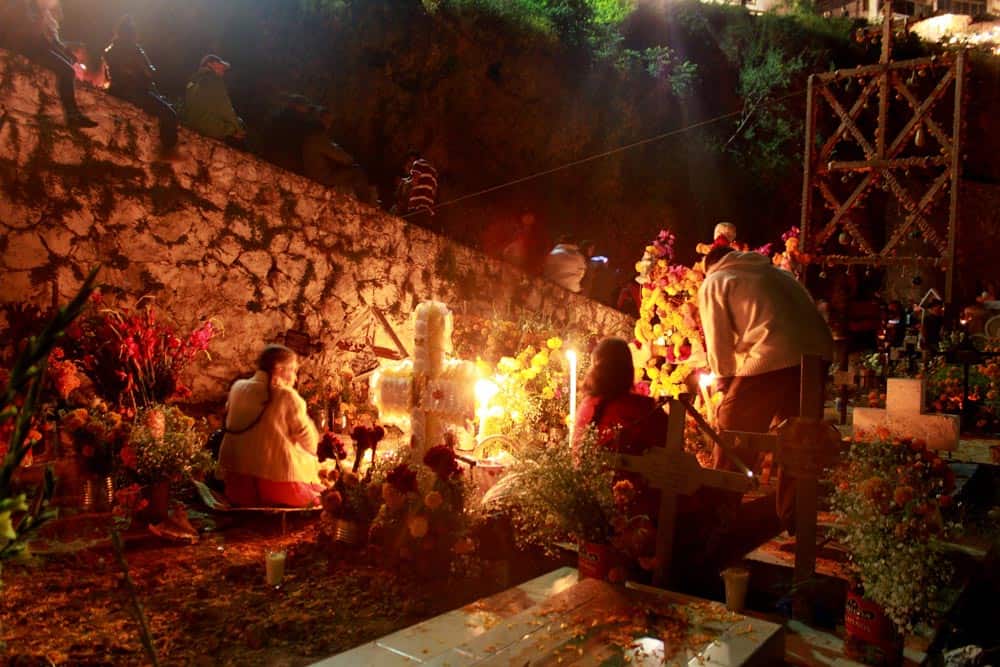
This is a small island in the middle of the lake of Pátzcuaro. There are two ways of enjoying this town: watch it from the ports in several points in the lake of Pátzcuaro or riding a boat and getting into the isle. Both experiences are magical.
Boats in the lake of Pátzcuaro have nets to fish, they sometimes call them butterfly nets because of their form (watch this video to understand it better). Some of these boats are around the lake and they have lights, so you see lights floating in the lake since no other light is on in the towns.
Since Janitzio is a unique experience, a lot of people go. Although it’s pretty close to Pátzcuaro, it might take you hours to get there because of it. Plan ahead what you want to do and where you want to go to make the most of your time.
Less traditional celebrations
As said before, Día de Muertos is something that has changed with the years. In bigger cities, you’ll find a mix between traditional celebrations and parades or festivals. Now, Day of the Dead in Mexico is celebrated in many different ways. Go to these places to find celebrations.
Aguascalientes
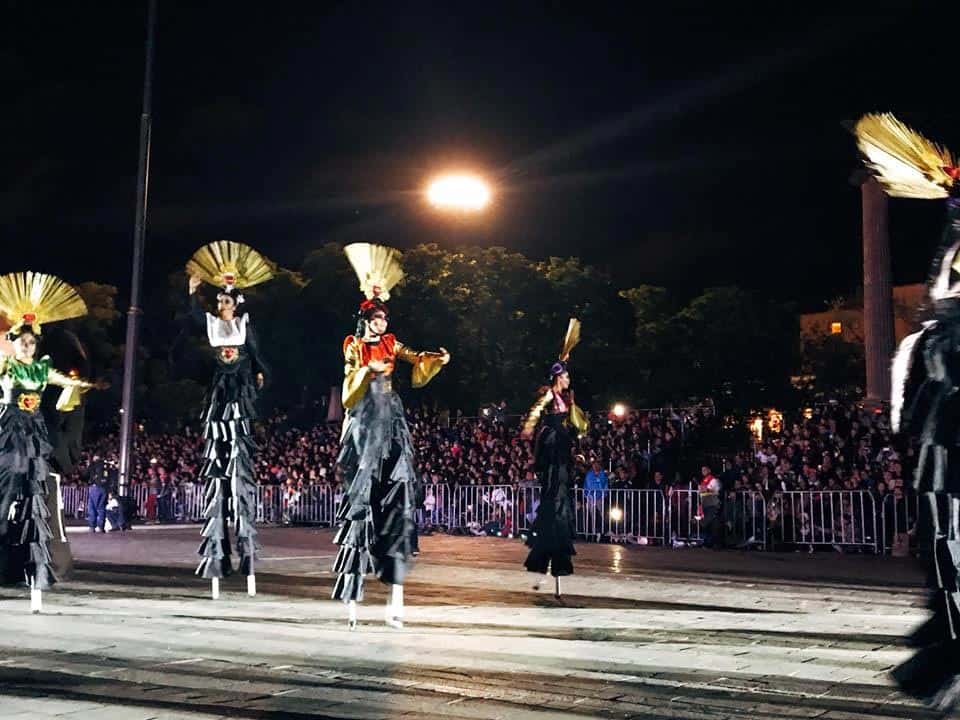
Aguascalientes is a small city close to the north of Mexico and it’s also the hometown of José Guadalupe Posada, the creator of the Catrina. In Aguascalientes, there’s a Festival de Calaveras (Festival of the Skulls) where, during 10 days, there are tons of cultural activities like food markets, concerts, plays, and even a parade! This parade has more than 3,000 participants and many parade floats. When people say that Mexicans laugh about death, well… this festival is just proof of it. Check the program here.
Mexico City
Remember the opening scene of Spectre, the James Bond movie? If you do, you know it happens during a Day of the Dead parade in Mexico City (by the way, we’ve got a complete guide on Mexico City). This obviously didn’t exist in Mexico, sorry to disappoint. But, since the movie came out, a skull parade is organized each year during Day of the Dead. The parade has a lot of people dressed as catrinas… or any other costume but using makeup in the face to look like a skeleton. Watch a summary here:
Now you’re ready to celebrate Day of the Dead in Mexico!
Don’t forget to also check our destination guides to find more inspiration for your next travels!

